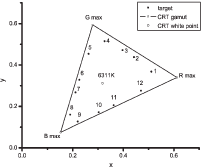Yesterday, PARC celebrated its 40th anniversary. The first part consisted of three panel discussions in the auditorium, which was packed full. The average age was relatively high, as mostly people from PARC's first two decades showed up, several from very far away. The air was electric, but this is no surprise with most of the leaders who created the technology that made the Silicon Valley all in the same room.
For the second part of the celebration we walked up to the third floor for a reception and technology showcase. On the way, it was refreshing to see that unlike us, PARC still has a cafeteria and a technical information center. But most satisfying was that talking with the current employees it is clear that PARC still has its secret sauce. They are the best scientists in the world, fired up to invent the future. When they explain their research you can feel how excited they are, and in their interactions you can experience the deep level of mutual esteem for each other: they each contribute their particular knowledge to the team, in an amalgam of synergy. Quite unique.
Happy birthday PARC, still rocking like 40 years ago!








